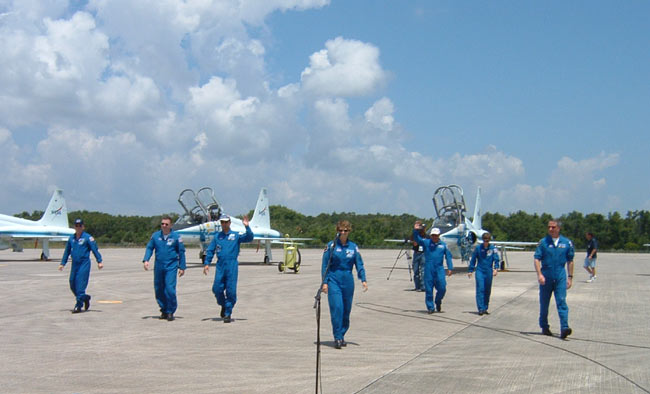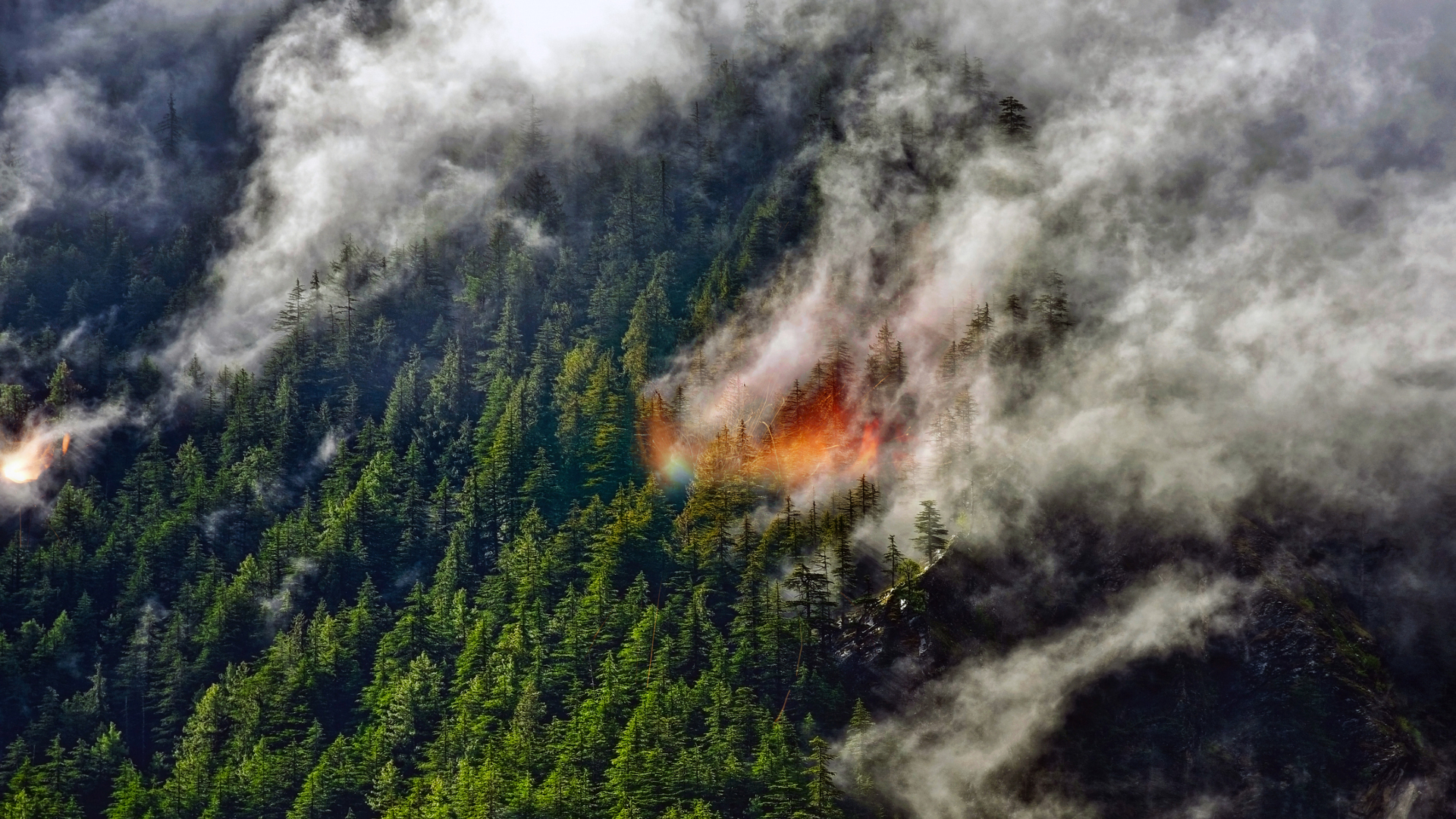Discovery's Astronaut Crew Returns to NASA Spaceport

CAPECANAVERAL, Fla. - For the secondtime in two weeks, the seven-astronaut crew of the space shuttle Discovery flewinto NASA's Florida spaceport Friday as they prepare for a July 26 launch.
"This wouldbe a great day for a launch," veteranastronaut Eileen Collins, commander of Discovery's STS-114 mission, told reporters here at Kennedy Space Center's Shuttle LandingFacility. "We're hoping that thisweather holds through next week."
Collins eased herT-38 jet to a stop on the tarmac at about 11:45 a.m. EDT (1545 GMT). At the same time, Discovery pilotJames Kelly halted his own T-38 aircraft with mission specialist CharlieCamarda in the back seat. STS-114 mission specialist Wendy Lawrence accompaniedCollins during the flight from Houston, Texas, where the astronaut conducted anascent/entry training simulation Thursday.
The arrivalof some STS-114 astronauts was delayed. NASA officials said that the T-38aircraft carrying STS-114 mission specialists Andrew Thomas, Soichi Noguchi andStephen Robinson had to return to Ellington Air Force Base to switch planes afterthey developed some in-flight problems.
"We hadsome mechanical problems with a couple of the planes," Thomas said. "We alwayshave back ups with us and just swapped out."
Collins andher fellow Discovery astronauts are slated to launchspaceward at about 10:39 a.m. EDT (1439 GMT) on July 26. Their flight has beendelayed since July 13, when launch controllers scrubbedthe attempted space shot after a liquid hydrogen fuel sensor failed a standardcountdown test. Since then, engineers have worked around the clock to isolateand fix the glitch, and are targeting two potential sources that includeelectromagnetic interference from cameras, heaters or other hardware aboardDiscovery and its external tank, as well as a grounding issue with wiringaboard the orbiter.
"We arevery proud of the work that the engineers, technicians and managers have doneto try and figure out this problem," Collins said, adding that she and her crewhave been listening in on technical briefings and following the troubleshootingefforts.
Breaking space news, the latest updates on rocket launches, skywatching events and more!
Engineershave been tracinga glitch in the engine cut-off (ECO) sensor system inside the liquid hydrogencompartment of Discovery's external tank. One of the four sensors failed toproperly report a 'dry' status - indicating the tank was empty of fuel - duringa countdown test. Under current flight rules, all four sensors are required toperform properly since they ensure Discovery's three main engines shut downbefore its fuel tanks run dry. If the engines continue firing once the tank isempty, they could rip apart the shuttle.
The STS-114 astronauts are NASA's first slated to ride a shuttle into orbit since the 2003 Columbia disaster that claimed the lives of seven astronaut and destroyed one orbiter.
While theengineering investigation has pushed Discovery's launch further into its flightwindow - which closes on July 31 - Collins said that safety,not scheduling, is paramount.
"The launchdate, to us, isn't that important...what's important to us is that we get through this processand do it right," Collins said. "We're really excited about getting this launch off. We'llbe talking to you from space."
- Fixing NASA: Complete Coverage of Space Shuttle Return to Flight

Tariq is the award-winning Editor-in-Chief of Space.com and joined the team in 2001. He covers human spaceflight, as well as skywatching and entertainment. He became Space.com's Editor-in-Chief in 2019. Before joining Space.com, Tariq was a staff reporter for The Los Angeles Times covering education and city beats in La Habra, Fullerton and Huntington Beach. He's a recipient of the 2022 Harry Kolcum Award for excellence in space reporting and the 2025 Space Pioneer Award from the National Space Society. He is an Eagle Scout and Space Camp alum with journalism degrees from the USC and NYU. You can find Tariq at Space.com and as the co-host to the This Week In Space podcast on the TWiT network. To see his latest project, you can follow Tariq on Twitter @tariqjmalik.
